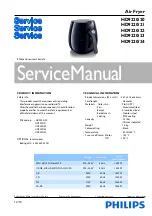
46
1. Motor is overheating and tripping out on internal overload protector...
a. Motor air vents clogged with lint.
b. Low voltage to motor.
c. Failed motor.
d. Failed blower (impellor and fan)...is out of balance.
G.
Both drive motor and blower (impellor and fan) motor
(Reversing Models ONLY)
are not operating
(does
not
start)...microprocessor controller (computer) motor indicator dots and relay output
light emitting diode (L.E.D.) indicators are on...
1. Failed arc suppressor (A.S.) board.
2. Failed contactors (both blower [impellor and fan] and drive).
3. Failed motors (both blower [impellor and fan] motor and drive motor).
H. Both drive motor and blower (impellor and fan) motor
(Reversing Models ONLY)
are not
operating
(does
not
start)...microprocessor controller (computer) L.E.D. motor indicator dots and the “door”
L.E.D. indicator are on
but the relay output L.E.D. indicators are off
(microprocessor controller
[computer] L.E.D. display does
not read “door”)...
1. Failed microprocessor controller (computer).
I.
Both drive motor and blower (impellor and fan) motor run a few minutes and stop...microprocessor
(computer) L.E.D. display continue to read time or percent of extraction and ALL indicator
dots are off...
1. Fault in main door switch circuit...
a. Main door switch circuit is out of adjustment.
b. Loose connection in main door switch circuit.
J.
Microprocessor controller (computer) L.E.D. display reads “dSFL” continuously and the buzzer
(tone) sounds every 30-seconds...
1. Fault in microprocessor heat sensing circuit...
a. Blown “dSFL” 1/8-amp fuse on the microprocessor controller (computer).
b. Failed microprocessor temperature sensor.
c. Failed microprocessor controller (computer).
d. Broken wire or connection somewhere between the microprocessor controller (computer) and the
microprocessor temperature sensor.
Summary of Contents for MDG-75
Page 22: ...18...














































